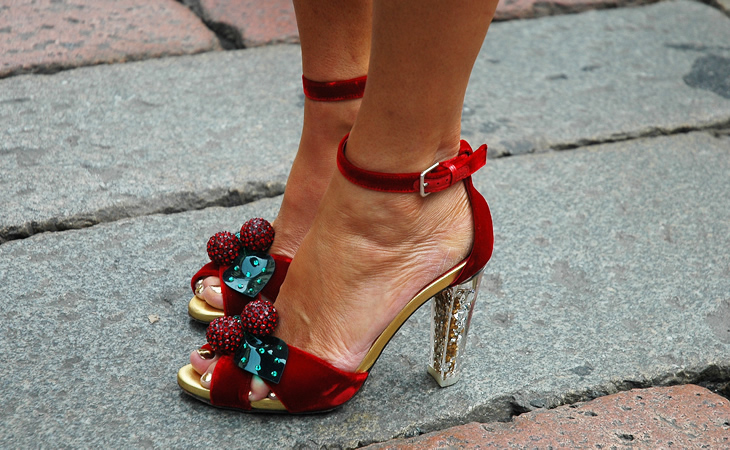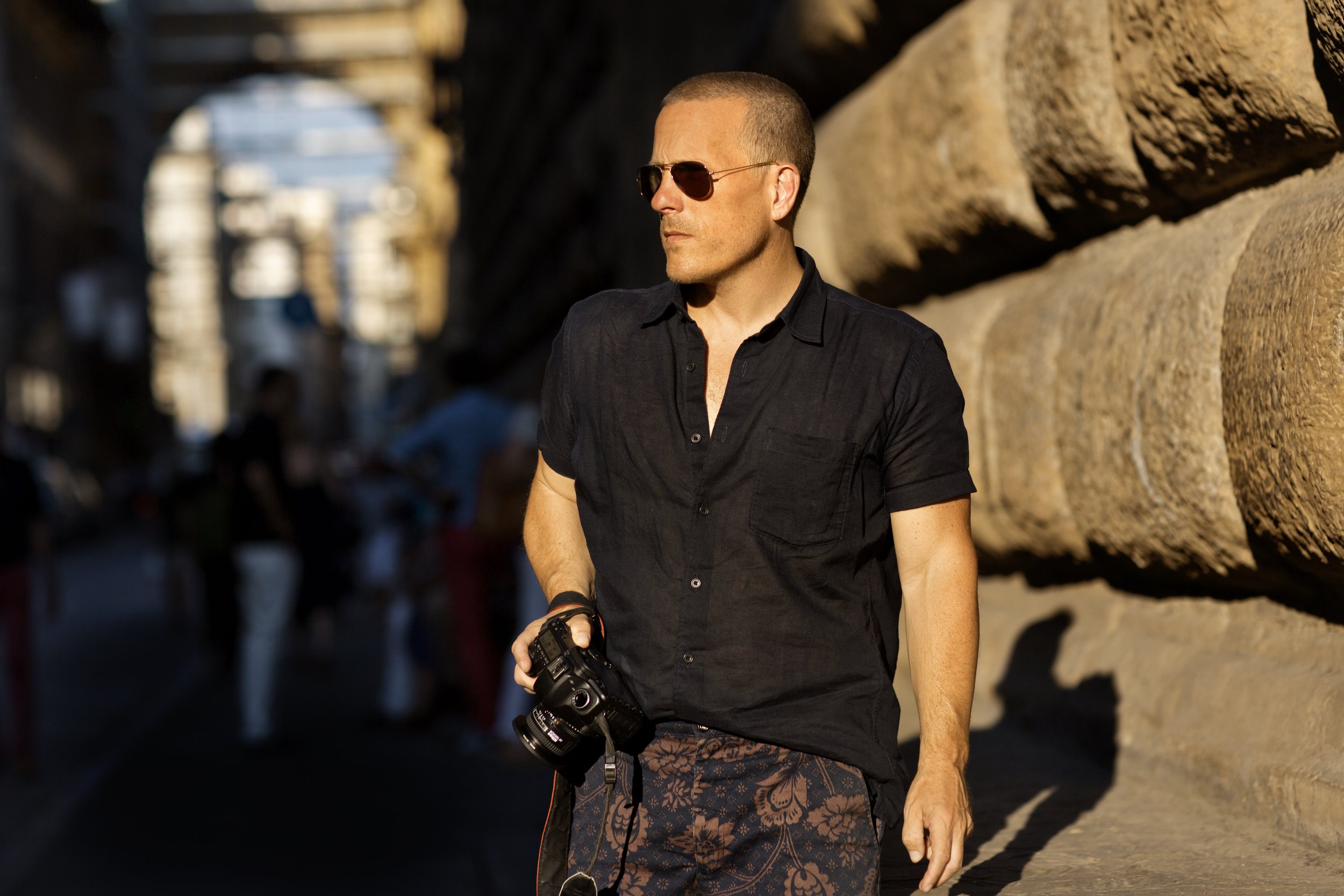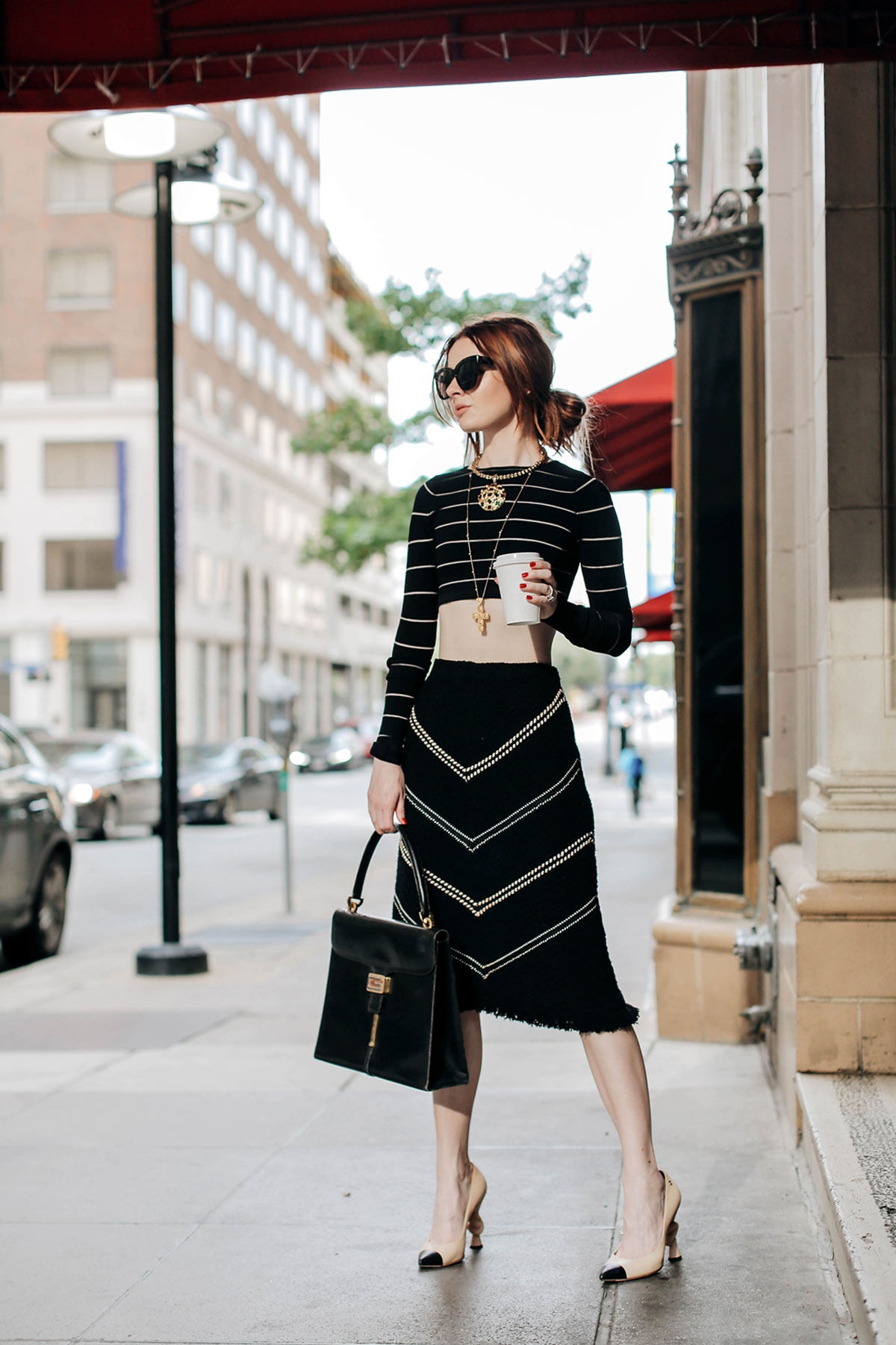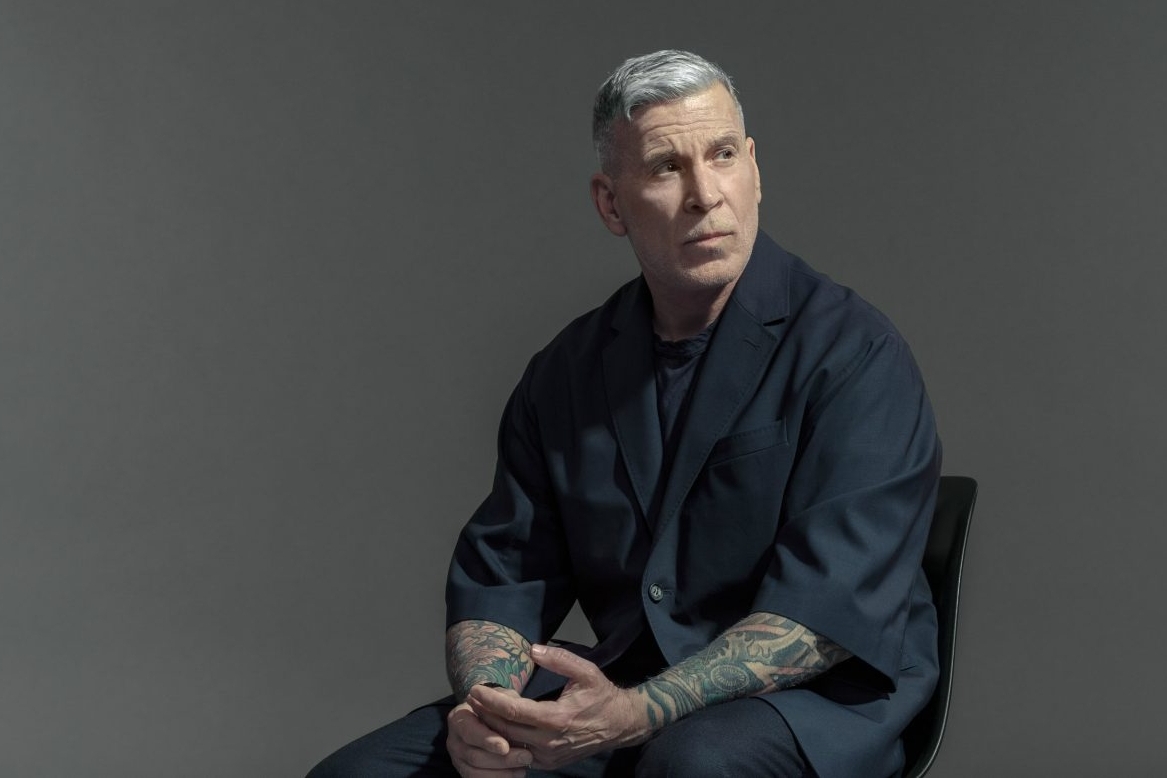"BLOGS" — 10 YEARS ON
HOW STREET STYLE BLOGS RESHAPED INTERNATIONAL FASHION & WHAT’S AHEAD.
TEXT BY TEDDY TINSON
We’re in the middle of New York Fashion Week, and it’s more visible than ever due in no small part to a group of people referred to as “street style photographer,” “blogger,” or “influencer.”
“The best fashion show is definitely on the street. Always has been, always will be,” the late, great “grandfather of street style photography” Bill Cunningham once said. Cunningham’s knowing notion never rang more true than a decade ago when blogs like Scott Schuman’s The Sartorialist and Tommy Ton’s Jak and Jil unwittingly forced the entire international fashion industry to wake up and join the technological revolution.
In 10 short years, the intoxicating immediacy of their contributions at once democratized and upended an industry built on time and exclusivity. Standout sites like Glossier [nèe Into the Gloss] and Man Repeller—once considered “just blogs”—emerged not long after and also contributed to this sea-change.
We spoke to a trio of New Media ‘early adopters’— a street style photographer, a blogger, an influencer, and The Sartorialist—about their respective influence on the last decade, and the question on everyone’s mind: What’s next?
SCOTT SCHUMAN, THE SARTORIALIST
Your popular street style photography blog The Sartorialist changed everything. What is your first memory of the post-Bill Cunningham street style phenom you helped bolster between 2005-2008?
At that point, the shows still seemed like an insider industry event. There were some celebrities but for the most part, it was just fashion people who were attending. I felt like I was bringing a different kind of reporting to what was happening around that event.
Who were your favorite subjects?
The beauty of it in the beginning was that most of the editors except for Anna Wintour were unknown by the general public and for the most part, unknown by me. I shot based on what was interesting, not on who it was. At that time, nobody knew who Giovanna Battaglia, Anna Dello Russo, or Carine Roitfeld were because they were just anonymous editors.
The fashion world and the general public found it really fascinating to see different faces of fashion rather than just the typical front row of people, celebrities, etc. Not to mention there weren’t really any fashion blogs going to the shows at that time.
Which peers or personalities inspired you most?
I was always a huge fan of Franca Sozzani and it was really exciting to meet her the first time. But for the most part, my inspiration was mainly photographers like Lartigue and Brassai, and August Sander who shot on the street but with an undeniable eye for personal style.
How has street style photography/blogging/influencer marketing informed your career trajectory and current business affairs?
I’ve always operated under the belief that good consistent content is the most marketable thing you can do, so I’ve never done anything to try and make my work more marketable or influencer-esque. If anything, I’ve gone the opposite direction. For example, my next book will be all India. I think it surprises my existing audience, and maybe adds a new layer of audience who I might not have now.
Barriers to entry for influencer marketing are seemingly low. How do you maintain and grow your audience in an ever-crowded space?
I think a lot of people approach social media as a self-promotion platform, as opposed to respecting the way the individual platforms work. If you want be successful on Instagram, I would think you’d need to see how the audience interacts with the platform. When you do that, it makes how you communicate much more easy. It keeps you from making mistakes like doing a nine-post single image that brands will do on their pages to promote a particular product and in the process clog up your feed with multiple posts. Yes, it makes a pretty profile, but for the actual user, it’s incredibly annoying. If brands and these different types of self-promoters actually used the format, they would understand this and not subject their audience to it (and potentially lose some of that audience). In the end, you have to really respect your audience, not just use them as a leverage tool to try and make more money.
With few exceptions, Instagram has replaced the “traditional” fashion/style site or blog for legacy media brands and entrepreneurs alike. What’s next?
At this point, it’s totally up in the air what’s next. At the moment, there is nothing on the horizon that looks like it will rival. The reason for Instagram’s success in fashion is that it’s so visual. The only thing that could replace would be even more visual and probably give more freedom to the creator of the content.
TOMMY TON, STREET STYLE PHOTOGRAPHER
In early 2008, your popular street style blog Jak & Jil was one of the fashion industry’s early game-changers. What is your first memory of the post-Bill Cunningham street style phenom you helped bolster?
My first memory is probably my first season in Paris and feeling the thrill of being surrounded by so many chic women. I knew instantly that I wanted to be around these women and photograph their every move outside the shows. It took some time to find my footing but it was just such a thrill running around not knowing anyone or where I was going.
Who were your favorite subjects at the time?
I wasn’t anticipating anything that would come out of all the time and effort put into photographing these subjects. My favorite subjects at the time were some of well-known models like Agyness Deyn, Irina Lazareanu, and Anja Rubik.
When was the first time you appeared on another style blog?
I think the first time I was featured on another site was Nylon Magazine’s website. It was truly an honor because I waited so many seasons to be noticed for what I was doing.
Which peers or personalities inspired you most?
I think I was most inspired by the Japanese photographers. They were so very kind and patient and courteous towards all the guests at the shows. Everyone always stopped for them and they were very passionate and hard-working. I became inspired by the images I’d see in Japanese fashion magazines initially.
How has street style photography informed your career trajectory and current business affairs?
It really brought an awareness to me that at the end of the day, the product needs to be relatable, accessible and desirable. Street photography has been another way for brands and influencers to market clothing and accessories. It has a more direct-to-consumer impact than traditional fashion advertising. It’s also more aspirational and inspirational to the masses.
Barriers to entry for street style photography and influencer marketing are seemingly low. How do you maintain and grow your audience in an ever-crowded space?
I think it’s really just about following your gut instinct and really believing in what you have to say. Everyone is unique for their reason, so there shouldn’t be a reason why you should worry about what that person or the other has to offer. You can definitely be very observant and learn to strategize the next steps in this over-crowded space but never forget who you are in this industry.
With few exceptions, Instagram has replaced the “traditional” fashion/style blog for legacy media brands and entrepreneurs alike.What’s next?
I really wish I had the answer. This whole shift was unexpected in the last few years and I can probably only assume the next thing will be more engaging and addictive.
JANE ALDRIDGE, CREATOR, SEA OF SHOES
What was the impetus for starting your blog Sea of Shoes, and your mother’s blog Atlantis Home?
I started Sea of Shoes when I was 15. I was always obsessed with fashion from a very early age and this was an interest my mother always shared and nurtured in me. My mom, Judy Aldridge, had a clothing line the ‘80s called Atlantis Undergound, and had modeled in Tokyo earlier, so she was deeply knowledgeable about fashion and the industry. Most of all, we loved vintage and thrift-ing. I started Sea of Shoes as a way of documenting that, and my mom started her blog Atlantis Home shortly after.
As one of the “original fashion bloggers”, what is your first memory of the post-Bill Cunningham street style phenom circa 2008-2010? Which peers or personalities inspired you most?
Like everyone during that time, I looked at The Sartorialist and Jak & Jil to see Scott and Tommy’s newest shots. I had my own blog by that time, and I also read BryanBoy and Susie Bubble’s blogs obsessively.
How has street style photography, blogging, and/or influencer marketing informed your career trajectory and current business affairs?
I started my blog at a time when bloggers weren’t monetizing and “influencer” was almost a decade away from being a term. I’m lucky to have turned it into a career and I am constantly inspired by the ways my peers have grown in their respective spaces. I look at what BryanBoy and Susie Bubble are doing and I am in awe of them. In addition to maintaining Sea of Shoes, I’m currently developing a web design business with my husband catering specifically to bloggers.
Though Instagram is mainly how people come across your content now, the web side of my business is still a huge revenue driver and an important asset when working with clients. I’m also working on a handmade recycled clothing line but it’s in early development stages.
Barriers to entry for influencer marketing are seemingly low. How do you maintain and grow your audience in an ever-crowded space?
Well, the barriers may seem low but it’s a real grind getting there. The most important thing is consistency and maintaining a point of view. I think we’re going to see a backlash soon to the algorithmic dictation of the way we consume every form of media. It would be easy to play in to creating only the type of content that performs the best on Instagram, but I think right now it will pay off better in the long term to create content that is true to your values and [pointof-]view.
With few exceptions, Instagram has replaced the “traditional” fashion/style blog for legacy media brands and entrepreneurs alike. What’s next?
I would really love to know what is next, and I’m keeping my eyes on the horizon because I am always ready for change. There is always going to be something new!
NICK WOOSTER, ORIGINAL INFLUENCER
As an unofficial “Internet superhero,” according to GQ — or “Woost-god” as many corners of the men’s style blogosphere have lauded — tell us about your preferred title, Free Agent.
I have been a free agent for the past five years. What this means is that I have the freedom to work on projects that are of interest to me. And I don’t have to get forced into a particular box.
I am currently working with Forty Five Ten as the Men’s Fashion Director and also as a creative director with Paul & Shark. I am also doing [‘Nick Wooster x’ ] collaborations with Greats, and Paul and Shark.”
What is your first memory of the post-Bill Cunningham street style phenom circa 2008? When was the first time you appeared on another style blog?
Everything started for me in January of 2010. I had just been appointed as the men’s fashion director for Neiman Marcus and Bergdorf Goodman. I had been living in Los Angeles for the prior six years, and was out of the street style loop. But when I landed in Milan for the men’s shows, both Scott Schuman and Tommy Ton [among many others] published pictures of me on the Sartorialist.com and GQ.com. That’s when it started.
Which peers or personalities inspired you most?
I credit Lawrence Schlossman who wrote quite a lengthy profile about me on his blog at the time. He called me a “badass.” I really think he singlehandedly gave me cred. By June 2010, when it was boiling in Paris, I wore a Fred Perry polo and everyone saw that I had sleeve [tattoos]. I guess that cemented the deal.
What were your favorite sites?
Obviously men.style.com, The Sartorialist, and Tumblr where the main drivers of the ”streetstyle“ freight train. This was all as Instagram was gestating.
How has street style photography and blogging informed your career trajectory and current business affairs?
I owe everything to street style and early blogs—because there was so much content, it still continues to generate images that have been plastered on mood boards around the world. It’s so crazy. And I am super-grateful for all of the opportunities it has afforded me.
Barriers to entry for influencer marketing are seemingly low. How do you maintain and grow your audience in an ever-crowded space?
I have no idea. All I can do is notice the statistics. I know what will ”work“ and what won’t. At the end of the day, it has to be authentic. Instagram Stories has changed the game for me –it’s better than TV!
With few exceptions, Instagram has replaced the “traditional” fashion/style blog for legacy media brands and entrepreneurs alike. What’s next?
If I knew what was next, I would be playing the future’s market. I think Instagram is doing an excellent job of developing interesting and evolutionary products and tools that keep it compelling. My guess is that until VR becomes a thing, Instagram is here to stay…for the foreseeable future, anyway!
ED NOTE: THIS STORY ORIGINALLY APPEARED ON CFDA.com



